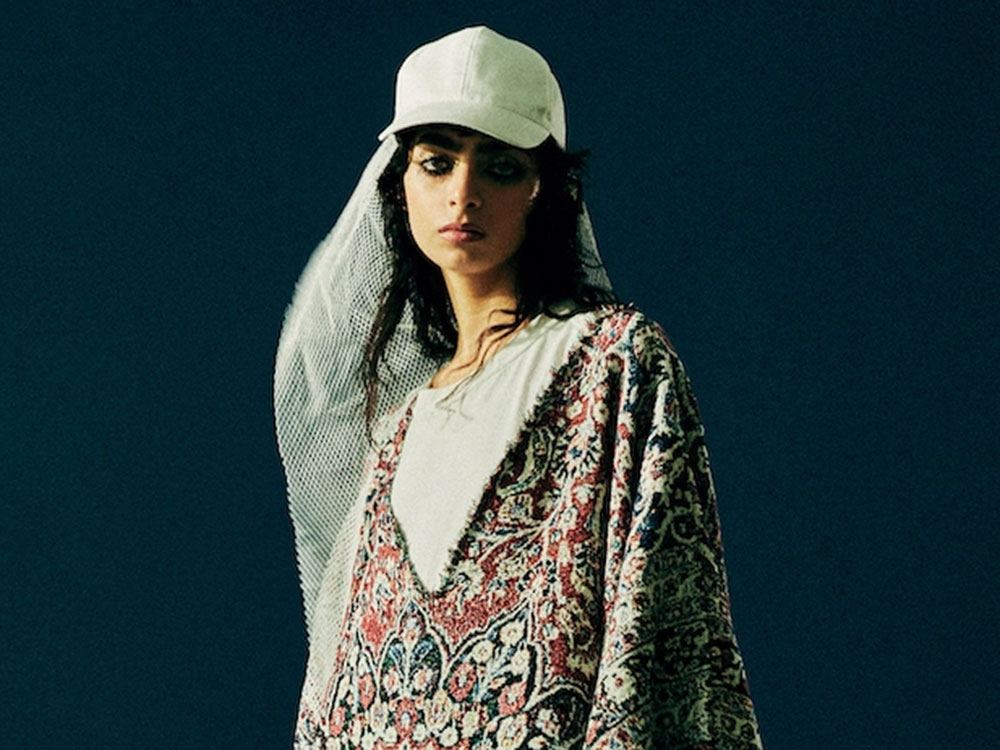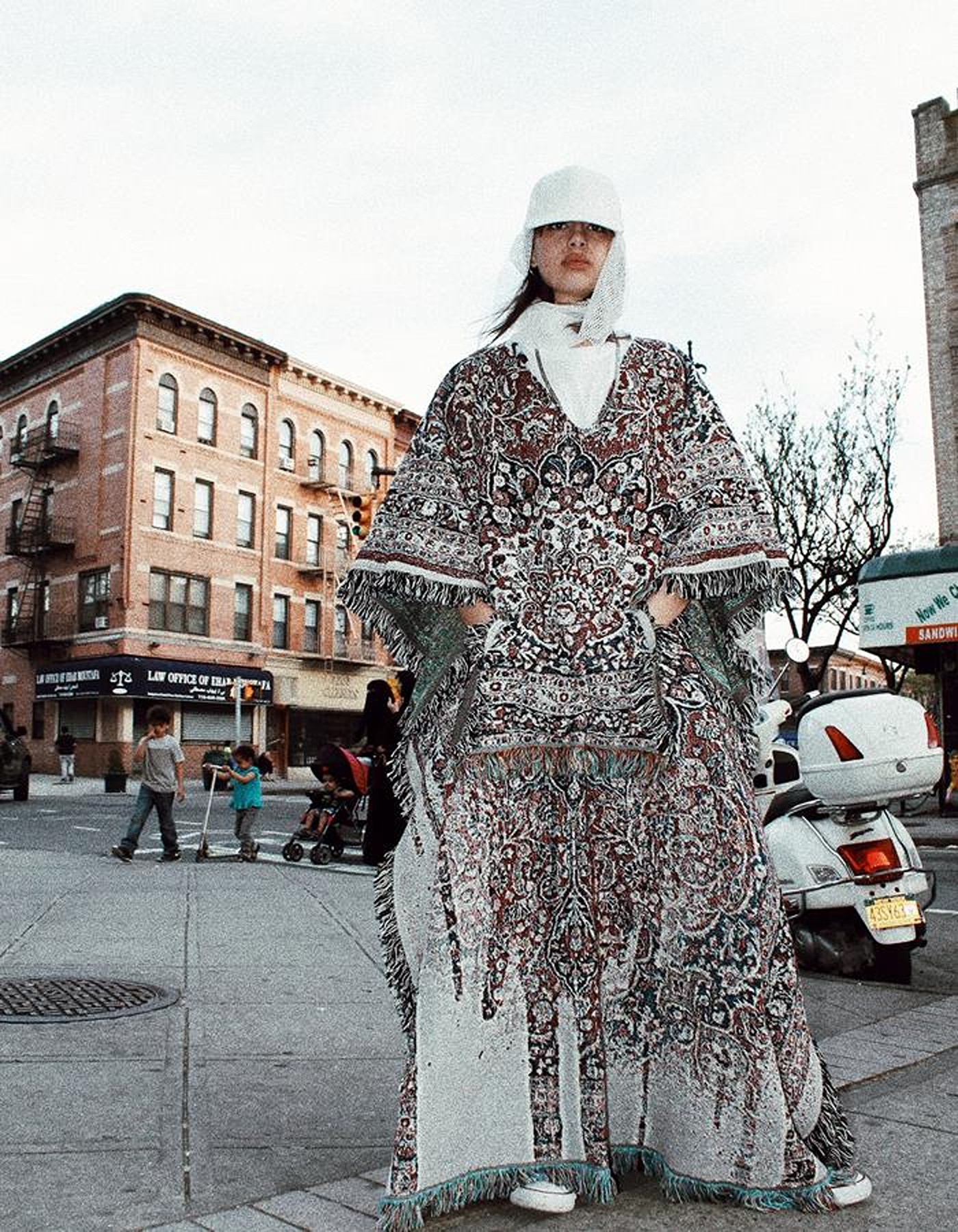Fashion
How Mina Tahir Reimagines Arabic Carpet Patterns for Modern Fashion

Seated against a vibrant floral backdrop, adorned with her iconic floral crown and wearing a traditional Mexican dress topped with a flowing black shawl draped over her shoulders, Frida Kahlo, the renowned Mexican painter, always carried the rich history of Mexico with her in every photoshoot.
Kahlo’s image has transcended her art, becoming a powerful icon in its own right, thrusting Mexican culture onto the global stage. Amidst the homogenizing force of global fast fashion, Kahlo’s image remains a rare symbol of cultural and ethnic expression, a quality often missing in today’s mainstream fashion.
Yet, award-winning Egyptian-Sudanese-American fashion designer Mina Tahir, founder of the Mina Tahir fashion label, rises as a fresh influence blending indigenous and contemporary styles. Her approach to fashion, reminiscent of Kahlo’s, is imbued with a youthful and modern technological twist.
Rooted in research, her designs are a thoughtful exploration of how fashion can bridge the gap between past and present. She embroiders a story of her heritage, identity and culture through each piece, transforming fabric into wearable stories.
Growing as a Creative
As a child, Tahir’s earliest memories revolved around the textiles and colors that filled her family home. She absorbed the intricate details of handmade patterns and fabrics, watching her grandmother sew clothes for her mother and siblings.
“I was always surrounded by vibrant colors, intricate patterns, and rich fabrics that my family cherished,” she tells Egyptian Streets. “Almost all the women in my family know how to crochet and sew and it was really fascinating as a kid watching them create.”
Her early aptitude for drawing also hinted at a natural eye for color and how to intuitively arrange design elements within a frame.
“I would spend hours drawing and experimenting with designs,” she recalls. “I think my obsession and consistent progress drawing as a kid was a clear indication of my innate creative inclinations.”
As she grew older and began sewing herself, she often repurposed garments and fabrics into new pieces that she could wear. This hands-on exploration of her personal style unearthed a deeper curiosity about fashion and its ability to mold and redefine style.
“Once It was time to choose a career path, it just felt natural to choose a creative career, as I was always involved in the arts and found the most fulfillment in creating,” she reflects.
Globe-trotting between Cairo, New York, Paris, and Seoul, Tahir honed her craft under the mentorship of international experts and local artisans, each contributing equally to her creative inspiration.
After graduating from the prestigious Parsons School of Design in New York, she gained exposure to the global fashion industry by creatively directing editorials featured in esteemed publications like Vogue Arabia, Elle USA, and Vogue Italia.
Working alongside iconic celebrities like Rihanna and Beyoncé on these editorials gave Tahir insights into the demands and gaps within the global fashion market, equipping her to reimagine traditional textiles for a contemporary audience.
Reimagining the Arab visual identity

When looking in the mirror, the first thing people notice is often how they dress. In Western cultures, clothing tends to be seen as a form of self-expression, whereas in other cultures, it holds deeper significance as a representation of cultural identity.
Tahir’s work centers on bridging the gap between self-expression and cultural identity, exploring the intersections of these two distinct realms and demonstrating how fashion can simultaneously embody personal expression and cultural heritage.
For decades, media representations of Arabs have often relied on stereotypical portrayals, particularly regarding fashion. This simplification overlooks the rich history and cultural significance embedded within Arab dress traditions.
In contrast, Tahir Tahir delves into the soul of Eastern and Arab fashion, highlighting its intricate details, symbolism, and deeper connection to tradition and spirituality.
In her debut collection for her fashion label, she explores the interplay and mutual influence between Western and Eastern visual cultures. “These cultures are not isolated and globalization has created a dynamic exchange between the two, where aesthetics and innovations from both spheres influenced one another,” she adds.
Her label is well-known for reimagining traditional Arabic carpet designs and transforming them into contemporary garments, breathing new life into tradition.
“My aim was to create wearable art that tells compelling stories and connects with contemporary audiences, paying homage to traditional craftsmanship by presenting it in a fresh way for a new generation,” she says.
In 2021, Mina Tahir was honored as one of the debut talent finalists for the Fashion Trust Arabia Award for her brand. The following year, in 2022, she achieved further recognition by winning the Vogue Italia CFE, leading to the debut of her collection at Milan Fashion Week SS23.
What sets Tahir’s work apart is not only her innovative designs but also her approach to production and functionality.
For instance, she frequently partners with local artisans to craft her garments and adopts a zero-waste philosophy in design. On top of that, she integrates advanced textile technologies to enhance and modernize traditional handcraft techniques.
“The intersection of technology, craft, and time allows me to create unique pieces that are both deeply rooted in cultural heritage and innovative in their execution,” she says.
Her meticulous attention to detail ensures her brand’s authenticity. It goes beyond celebrating diversity through design; it also empowers local artisans by integrating their craft into the very foundation of her work.
Each fashion piece tells a story. This story intertwines Tahir’s culture with the wearer’s personality: someone who is independent, culturally conscious, and embraces the modern world without losing their roots.










